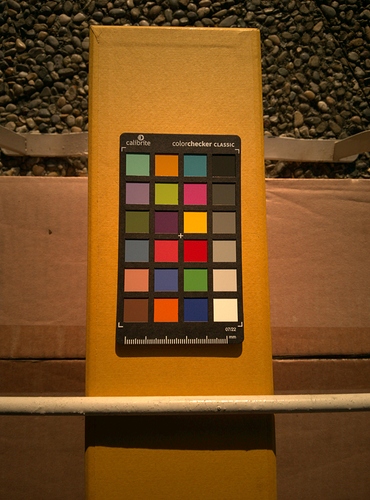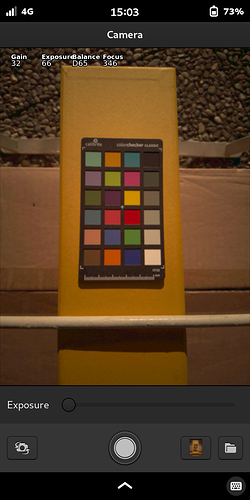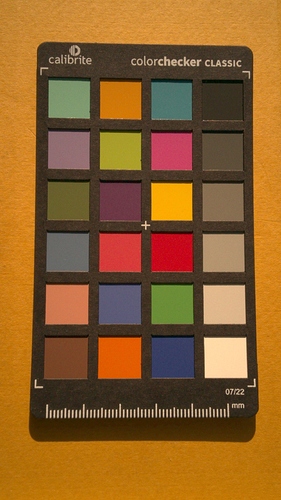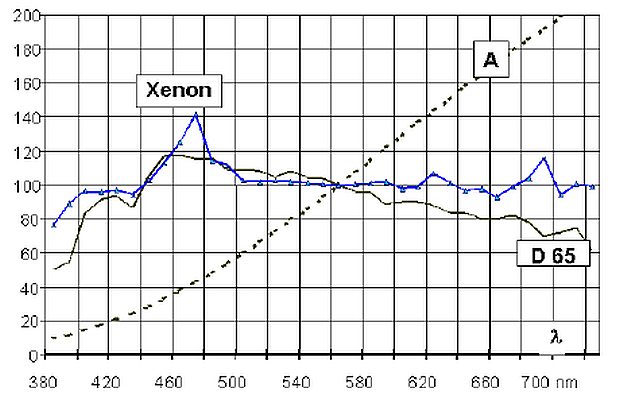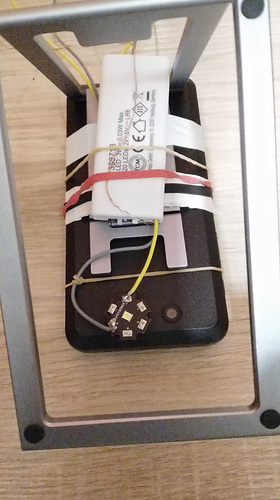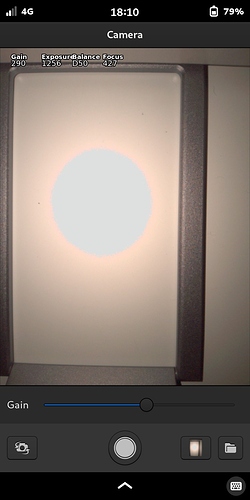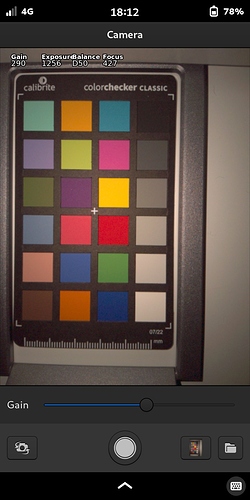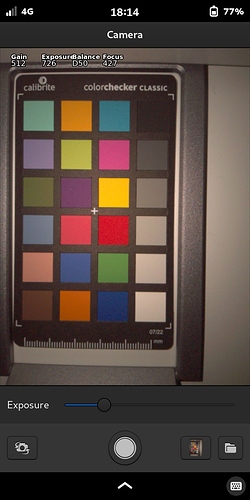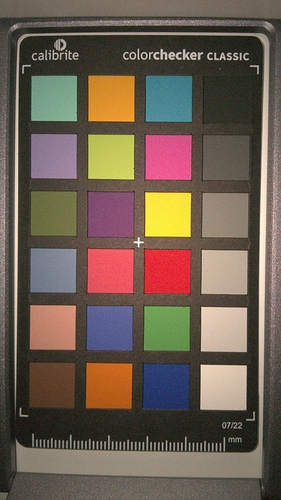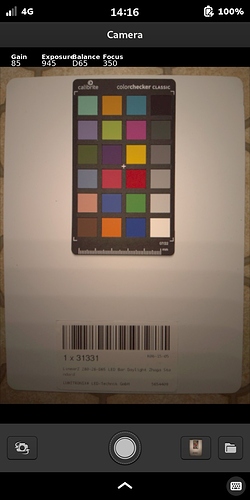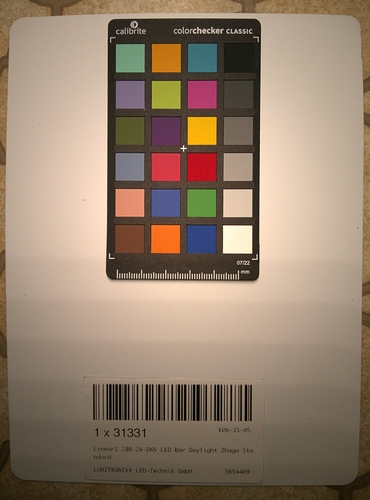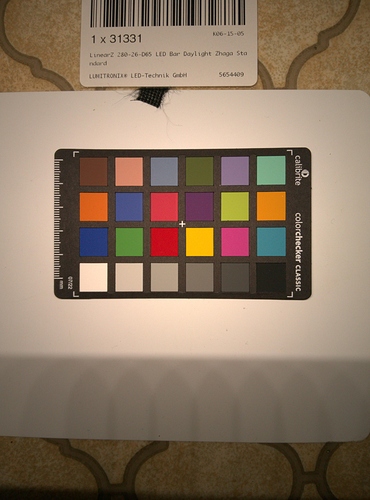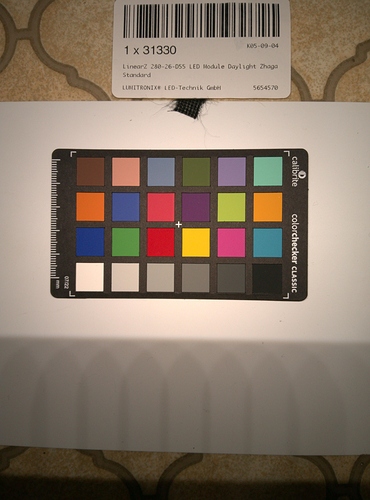You probably know more than I do ![]() All I know about photography is what I learned when implementing color balance stuff in the camera app - and I already managed to forget a big chunk of it
All I know about photography is what I learned when implementing color balance stuff in the camera app - and I already managed to forget a big chunk of it ![]() If you think that this is an adequate D65 source for taking a calibration photo and you don’t mind such purchase, then go for it!
If you think that this is an adequate D65 source for taking a calibration photo and you don’t mind such purchase, then go for it!
My initial point was that with manufacturing tolerances and variances together with the many environmental factors/parameters affecting performance, the measurable real world characteristics/metrics are most likely to be significantly different from anything provided by the manufacturer and that the manufacturer would never commit to guaranteeing exact numbers.
To determine whether or not a particular source is suitable to be used as a CIE D65 reference, you should look at the SSI (Spectral Similarity Index) value when comparing against CIE D65 SPD.
In the case of critical calibration, I am not aware of any solid state/LED sources that I would consider to have an SPD curve similar enough to that of CIE D65.
Have been testing auto exposure/gain and autofocus. First two work great, auto white balance does not work since it is unstable going back and forth without converging somewhere. Also my images are saved in .tiff instead of .jpg using dcraw which is a little odd.
In order to have it perfect do you agree with getting LinearZ 280-26-D65 LED Module? Is it rated at 653?
I am guessing that sunlight in the middle of summer at noontime with clear skies would be the standard? Would that be D55 or D65, or does it need to be measured?
It’s certainly not perfect (look at the spectral comparison with D65 on page 4 of the datasheet, there are very clear differences), it is however, about as good as you are going to get from a white light LED source.
The most notable difference is in the lower end of the spectrum this area represents the blues of the visible spectrum. LEDs have an incredible peak in this range in comparison to the flatter/wider curve of natural daylight, this is not specific to this LED or type of LED but rather a characteristic of all white light LED sources available today. At the other end of the spectrum, the reds also fall off quite considerably, this also is a characteristic of the LEDs of today. You can get LED source engines with extended blues and reds but, as far as I’m aware, not in a single emitter package, and they still won’t get you a perfect match.
As to how much of these differences are of any consideration is a whole other question, the camera is probably working in the sRGB colour space which has a significantly smaller gamut that the visible spectrum provides. I have no idea what the intended calibration process is so couldn’t comment on the suitability of the proposed LED source for that application.
Both D55 and D65 are derived curves to represent daylight of some sort, D65 is intended to represent a typically average day in Europe around midday, D55 is representative of an average mid-afternoon.
As I’ve spent two days on doing something else (resulting in eye fatigue that I have now), my very first/quick photo (daylight/sunlight, mid-afternoon one on top of here used Mini card) was out of focus (and quite useless as such):
@dos, what I need to avoid (actually improve)? Asking while I’ll continue to improvise without having any professional equipment (other than ColorChecker®), yet would like to know if I need to put Mini card few centimeters closer to the Librem 5 camera (or keep this distance, or …). I hope to be back here with some other D65 photo (or two) within next days (also not sure if you’ll need
.dng file … if I actually actually get there  , manage to provide some indeed useful photo for your needs).
, manage to provide some indeed useful photo for your needs).
Manual setup slightly changed from what shown on this screenshot and raw crop from .dng file (same as above):
I’m not really fond of the idea of using natural daylight for calibration, as it sounds to me like there would be way too much variation in lightning conditions because of clouds, year season, geographic location, buildings around etc. Besides, I believe mid-afternoon lightning would be the one modeled by D55, not D65.
That said, even without controlled lightning conditions it would likely still be much better than the current matrix we use ![]()
Other that that, the photo looks fine. The squares are definitely big enough to be useful (some other color checkers are much more detailed and may need to be shot closer, but for this one it should be perfectly fine as is now). I would be careful with that last white square, it looks easy to overexpose.
Absolutely. JPEGs will be useless for this purpose ![]()
Thanks for your feedback/encouragement! I hope to be have similar setup ready (including myself) under one D65 LED light (or perhaps two) source(s) tomorrow evening, as mid-afternoon post from today was more about having some dialog.
Also and after I post real D65 LED light source .jpg file here, where I can upload the actually useful (big) file (or two)? Actually simple mail toward support@ Team might be easy thing for myself to do (.dng file related)?
My concern is that the natural variations pale in comparison to the variation of an artificial source. The main advantage to an artificial source is that it is more repeatable. Once all of those obstructions and reflections that you listed are avoided, and the picture is taken with the sun at the highest point in the sky (typically noon, although time zones can make that less accurate), it should be fairly close. Maybe we can repeat this on June 21st 12:00 PM, but I suspect that the accuracy will rank something like this:
- The D65 official reference
- June 21st 12:00 PM with clear sky and no reflections
- Febuary 12:00 PM with clear sky and no reflections
- A D65 LED source
I wonder if other phone cams use lookup tables of correction matrices, indexed to time of day, to approach a better result. That said, this scheme is probably primitive, with AI corrections taking over.
I’m finding this chart as quite useful:
EDIT:
I still do not have with me up to 180 mA constant current output needed to power on projected to be used D65 LED source, so I was playing today (needed my exercise anyway) with two AA Ni-MH batteries and single Nichia NF2W757GT-F1 Optisolis SMD-LED with PCB (Star), 23lm, 5000 Kelvin, CRI 95:
Determining white balance of the scene being photographed is much simpler than that. What we need here is different and not something you need in regular usage - we need a photo of a target with known characteristics taken under known conditions, so you can then derive arbitrary transformations based on this collected data.
For the best results we would need more photos like that using various standard illuminants, but one will already do wonders compared to none 
It looks like a Xenon lamp is close to natural light. Far closer than LEDs. It looks like Xenon can range between 5000K and a little over 6000K, depending on the bulb and driver. It is probably not high enough for D65, but it has great CRI.
I moved slightly forward and certainly learned few things (for example that focus on the screen and its output … not quite managed to make those perfect anyway) from Camera:
@dos, with my hope that those might help (I was careful not to overexpose white). Wait, actually below one(s) will go to you (I needed some time to release that I’m making photos under wrong LED COBs orientation). D65 and D55 (5700K LED COBs) light sources:
Just to add here that in the last linux 6.1-12 version Purism enabled the 2 leds, but also increased the temperature level also added one temperature level in GUI for manual use, so may improve quality photos in camera.
P U R I S M
What do you mean? The LEDs are not adjustable as far as I know.
I mean that the light can be less orange in the high level.
Its is ajustable in 4 ways under gui.
The updates didn’t make them “less orange”, but they did make them brighter.
